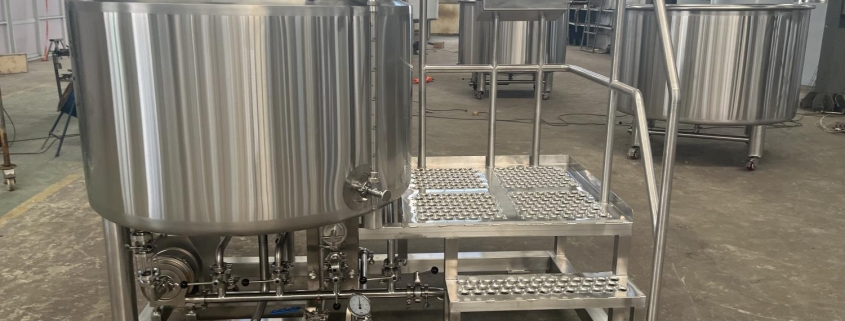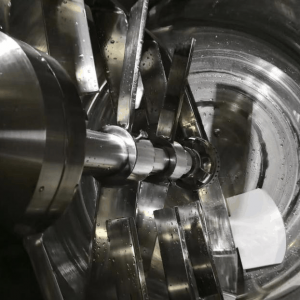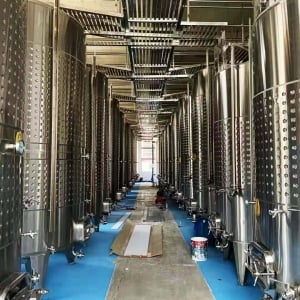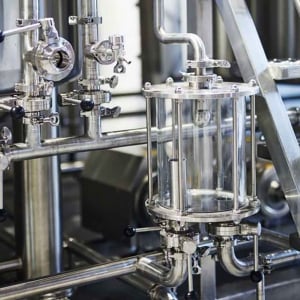MicroBrewery System
The art of brewing beer is as old as civilization itself, and in recent years, microbreweries have exploded in popularity as beer enthusiasts seek craft brews with unique flavors, made with passion and precision. Whether you’re a seasoned brewer or a newcomer wanting to dive into the brewing industry, understanding a microbrewery system is key. In this comprehensive guide, we’ll walk you through everything you need to know—from choosing the right equipment to understanding the brewing process, installation, maintenance, and more.
Overview of the Micro Brewery System
A microbrewery system refers to a smaller-scale brewery capable of producing limited amounts of beer. Unlike large commercial breweries, microbreweries focus on craft beer with unique flavors, using fresh ingredients and often experimenting with different brewing methods. The microbrewery system typically produces beer for local consumption, often serving their creations on-site or distributing them to nearby restaurants or pubs.
What sets a microbrewery apart is its production size—generally producing up to 15,000 barrels annually. These systems are highly customizable, allowing brewers to adjust their brewing process to suit their needs, whether it’s a focus on small-batch production or experimenting with new beer varieties.
Microbrewery Equipment Guide
The brewing process demands a variety of specialized equipment. Depending on your production scale, budget, and beer type, you’ll need different tools. The right equipment will allow you to brew efficiently and ensure consistency in quality.
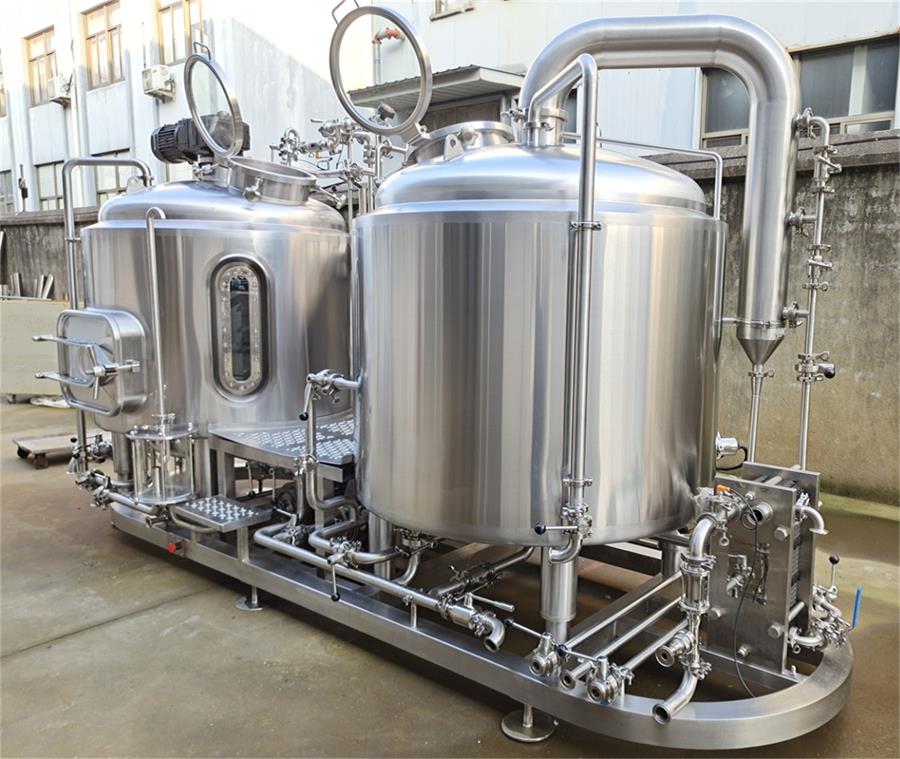
Key Microbrewery Equipment and Their Functions
| Equipment | Function |
|---|---|
| Mash Tun | Where the mashing process occurs, converting malt starches to fermentable sugars. |
| Boil Kettle | Used to boil the wort after mashing, crucial for sterilizing and flavor extraction from hops. |
| Fermenter | The vessel where yeast is added to the wort, converting sugars into alcohol and carbon dioxide. |
| Heat Exchanger | Cools down the boiled wort to the correct temperature for fermentation. |
| Grain Mill | Crushes malted barley to create grist for the brewing process. |
| Wort Pump | Moves wort from the mash tun to the boil kettle, or around the brewery during different stages. |
| Bright Beer Tank | Holds finished beer that is ready for packaging. This is where carbonation and clarity improve. |
Selecting the Right Equipment for Your Brewery
Choosing the right equipment can feel daunting, especially if you’re new to brewing. Factors like capacity, type of beer, budget, and space all come into play.
- Capacity: The size of your brewing system (e.g., 5-barrel, 10-barrel) dictates how much beer you can produce at once. Smaller systems work well for craft brewers focused on variety, while larger systems suit more regular production.
- Space: Make sure your brewery has enough room for equipment and storage. A cramped space will hinder the brewing process and may increase maintenance costs.
- Customization: Breweries often need customized equipment based on their specific brewing styles. Working with suppliers who offer customizations ensures your system meets your exact needs.
- Budget: Microbrewery systems can range from $100,000 to over $500,000 depending on the size, equipment quality, and customization options. Carefully balance your startup costs with expected production output to optimize ROI.
Brewing Process Using a Microbrewery System
The brewing process in a microbrewery involves a series of intricate steps that transform raw ingredients into delicious beer. Let’s break down the core steps.
1. Malting
This process involves germinating and drying cereal grains to convert them into malt. Malt provides the sugars needed for fermentation. Microbreweries often source malt from specialized suppliers, but some also have their own small-scale malting equipment.
2. Mashing
Mashing is where you mix malted grains with hot water in the mash tun. This process converts starches in the grains into fermentable sugars, creating a sweet liquid called wort.
3. Lautering
Once mashing is complete, the wort is separated from the grain husks through a process called lautering. The clear wort is collected and moved to the boil kettle.
4. Boiling
The wort is boiled and hops are added to provide bitterness, flavor, and aroma. Boiling also sterilizes the wort, making it safe for fermentation.
5. Fermentation
Once the wort is cooled using a heat exchanger, it’s moved into a fermenter where yeast is added. Yeast consumes the sugars, producing alcohol and carbon dioxide.
6. Conditioning
After fermentation, the beer is conditioned in a bright beer tank. Here, the beer matures and carbonation levels are controlled.
7. Packaging
The final step is packaging the beer into kegs, cans, or bottles for distribution or on-site sale. Microbreweries often bottle or can small batches, while larger operations may invest in keg systems for local distribution.
Capacity, Space, Design, and Customization Options for Microbrewery Systems
Your microbrewery’s design, layout, and capacity must be tailored to your production goals and the available space. Below is a detailed table to help you consider the necessary factors for brewery planning.
| Factor | Considerations |
|---|---|
| Capacity | The size of the brewing system, typically ranging from 3 to 30 barrels. The larger the system, the more beer you can brew in each batch. |
| Space | You’ll need sufficient space for each component of your brewing system, as well as storage for raw materials, finished products, and packaging. |
| Design & Layout | A well-designed layout optimizes the brewing process, minimizes movement between stages, and reduces labor. Focus on creating an efficient workflow, from grain milling to packaging. |
| Customization | Many breweries opt for customized systems to meet specific brewing needs, whether for unique beer styles, branding, or scaling production. You can customize fermenters, mash tuns, or add automated controls to simplify the process. |
Cost of Microbrewery Systems and Suppliers
Choosing the right supplier is essential for obtaining a high-quality microbrewery system that meets your production needs. Below is an overview of some common suppliers and their pricing ranges.
| Supplier | Price Range | Specialization |
|---|---|---|
| BrewTech | $150,000 – $300,000 | Known for customizable small-batch systems and high-end fermenters. |
| Ss BrewTech | $100,000 – $250,000 | Offers systems with advanced features, ideal for scaling up. |
| Specific Mechanical Systems | $200,000 – $500,000 | Focuses on high-quality, turnkey systems for serious microbreweries. |
| Premier Stainless Systems | $180,000 – $350,000 | Provides customizable brewing systems with a focus on automation. |
| Psycho Brew | $100,000 – $220,000 | Budget-friendly options with smaller production capacities, perfect for newcomers. |
Installation, Operation, and Maintenance of a Microbrewery System
Proper installation and maintenance are critical for the long-term success of your brewery. Below is a detailed guide to ensure smooth operation and minimal downtime.
| Stage | Description |
|---|---|
| Installation | Ensure a professional installation with electrical, plumbing, and ventilation systems correctly set up. Work with the supplier or a third-party contractor for setup. Plan for several weeks of testing before your first production run. |
| Operation | Once installed, familiarize yourself with all system components. Automated systems may reduce the need for hands-on operation, but manual systems require close monitoring during brewing. |
| Maintenance | Regular cleaning and sanitization are crucial to avoid contamination. Schedule regular maintenance checks for pumps, kettles, and fermenters. Replacing worn-out gaskets and ensuring proper calibration of temperature controls will prolong the life of your equipment. |
How to Choose the Right Microbrewery Supplier
Choosing the right supplier for your microbrewery system is critical for quality, durability, and ease of use. Here are some factors to consider:
| Factor | Considerations |
|---|---|
| Reputation | Look for suppliers with a proven track record in the industry. Check reviews, testimonials, and visit existing breweries using their equipment. |
| Customization Options | Ensure the supplier offers customization to suit your brewing needs, whether it’s modifying the layout or adding automation features. |
| Support & Training | Good suppliers provide technical support, training for your staff, and ongoing assistance with system upgrades. |
| Warranty & Maintenance | Look for warranties that cover all critical components, and find out if they offer maintenance packages or after-sales service. |
| Pricing | Balance cost with quality. A more expensive system may have better long-term durability and lower maintenance costs. |
Pros and Cons of Microbrewery Systems
| Pros | Cons |
|---|---|
| Allows for creativity and small-batch production | Can be expensive to set up initially |
| Customization options for unique beer styles | Requires regular maintenance and skilled operation |
| Lower production levels allow for closer quality control | May have limited capacity compared to large breweries |
| Greater flexibility in product offerings | Space and equipment restrictions might limit growth potential |

FAQ
| Question | Answer |
|---|---|
| What is the cost of a microbrewery system? | Microbrewery systems range from $100,000 to $500,000, depending on size, capacity, and customization options. |
| How much space do I need for a microbrewery? | A 3-10 barrel system typically requires 1,500-2,500 square feet, including space for storage and packaging. |
| Can I customize my microbrewery system? | Yes, many suppliers offer customization options to suit your brewing style and production needs. |
| How long does it take to install a microbrewery system? | Installation usually takes several weeks, including testing and troubleshooting. Plan for a month or more to get everything up and running smoothly. |
| Is a microbrewery system easy to maintain? | While regular cleaning and sanitization are required, modern systems are designed for easy maintenance. Many suppliers offer support for ongoing upkeep. |
A microbrewery system is the heart and soul of any craft brewery, providing both the tools and the flexibility to produce unique and flavorful beer. With the right equipment, design, and maintenance plan in place, you can scale your production while staying true to the art of brewing. Whether you’re a hobbyist taking the next step or a serious brewer looking to upgrade, this guide has everything you need to know to get started.

